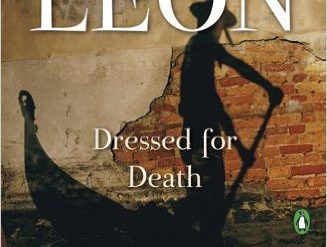
Estimated reading time: 6 minutes
During the last ten years of his life (1966-76), Mao Zedong shut down China’s schools and universities, denying an education to a generation. At his urging, millions of Chinese teenagers and young adults turned instead to revolution. They upended life throughout their country in a frenzy of fanatical posturing and violence. In this so-called Cultural Revolution, those who were already “educated youth” were sent to rural villages to learn the ways of the people by working for years in menial jobs among the peasantry. The central characters in Qiu Xiaolong’s novel, A Loyal Character Dancer, set in 1990, have all emerged scarred from this experience. And the legacy of the Cultural Revolution haunts them all. The book is both a masterful detective story and a thinly fictionalized history of China midway through its transition from Mao to Xi Jinping.
A politically sensitive case
A Loyal Character Dancer is the sequel to Death of a Red Heroine, Qiu’s award-winning debut. It’s the first in a series now thirteen strong by an author whose experience mirrors that of his characters. (Qiu was born in Shanghai in 1953 and came of age during the Cultural Revolution.) His protagonist, Inspector Chen Cao of the Shanghai Police Bureau, is both one of the most skilled and intuitive investigators on the force and a published poet with a growing reputation in literary circles. And his girlfriend, Ling, is the daughter of a senior member of the Politburo.
So, when a case with sensitive political overtones turns up, Chen often gets the assignment. But this time he stumbles into one on his own. On a walk through Bund Park, a caretaker points him toward the gruesome remains of a young woman. There was little to be learned from the corpse other than the fact that she had been savagely murdered with an ax.
The ax blows were a sign that the murderer was a member of one of the powerful triads, the transnational criminal gangs that flourish in China’s coastal cities. But that clue might also have been left by someone seeking to disguise a personal motive. “It was hard to establish the truth now, as the line between truth and fiction was always being constructed and deconstructed by those in power.” But that was Chen’s job.
A Loyal Character Dancer (Inspector Chen #2) by Qiu Xiaolong (2002) 368 pages ★★★★★

A seemingly trivial assignment turns into a high-stakes case
Chen’s investigation of the young woman’s murder quickly runs into obstacles. If a triad was responsible, Chen may never learn the truth. The gangs’ names and their senior figures are well known to the authorities, who do little to rein them in—and many police are on their payroll. Perhaps it’s a coincidence that Chen’s boss, Party Secretary Li Guohua, the highest-ranking officer in the police, steers him to another assignment. Chen isn’t sure at first. But he’s unhappy to have the job of working with a United States Marshal sent to China on a seemingly trivial mission. Soon, though, as the new assignment proves anything but trivial, Chen finds himself in the throes of another high-stakes case. And it may even be linked to the young woman’s murder in the park.
In the United States, an immigrant from China’s Fujian province is now a witness in court against the head of a major human-trafficking gang based there. The trial is imminent. But the man won’t testify unless the US Marshals bring his wife to him from China. And now it’s Chen’s job, working with Inspector Catherine Rohn of the Marshals Service, to find the wife, Wen Liping, and send her on her way to the US. Unfortunately, Wen has disappeared. It looks as though the trafficking gang—a triad—has kidnapped her. And to find her, Chen and Rohn will face off against a powerful array of enemies. Not one but two triads. The local police in Fujian, who are in bed with the local triad. And the internal security officers in Chen’s own department, who have set out to discredit him.
A classical Chinese poem becomes an important clue
Woven throughout Qiu’s story is critical background information drawn from China’s 5,000-year history. The mass of that history weighs heavily on Chen’s shoulders. And it acquires a personal dimension as the centrality of the Cultural Revolution comes to light in his and Catherine Rohn’s investigation. Chen, a gifted poet, also views the case through the lens of verse, quoting from memory short passages as insight dawns. In fact, a poem proves to be a pivotal clue in the trafficking case.
About the author

Wikipedia describes Qiu Xiaolong as “a Shanghai born-American crime novelist, English-language poet, literary translator, critic, and academic.” In 1988, he came to Washington University in St. Louis to write a book about T. S. Eliot. (Eliot’s grandfather had founded the university.) But after the Tiananmen Massacre the following year, he elected to stay in the United States, knowing he would face trouble if he returned.
Qiu was born in 1953 and experienced the Cultural Revolution as a teenager and young adult. He decided to learn English, setting himself on an academic course. He received a BA and an MA from Chinese universities, then later earned both an MA and a PhD from Washington University. Qiu and his family live in St. Louis.
For related reading
I’ve reviewed the first of the books in this series at Death of a Red Heroine (A gripping Chinese police procedural) and the third When Red Is Black (This gripping crime novel shows China in transition).
Check out 30 insightful books about China.
You might also enjoy my posts:
- Top 10 historical mysteries and thrillers
- Top 10 mystery and thriller series
- 20 excellent standalone mysteries and thrillers
- 30 outstanding detective series from around the world
- Top 20 suspenseful detective novels
And you can always find my most popular reviews, and the most recent ones, on the Home Page.


























